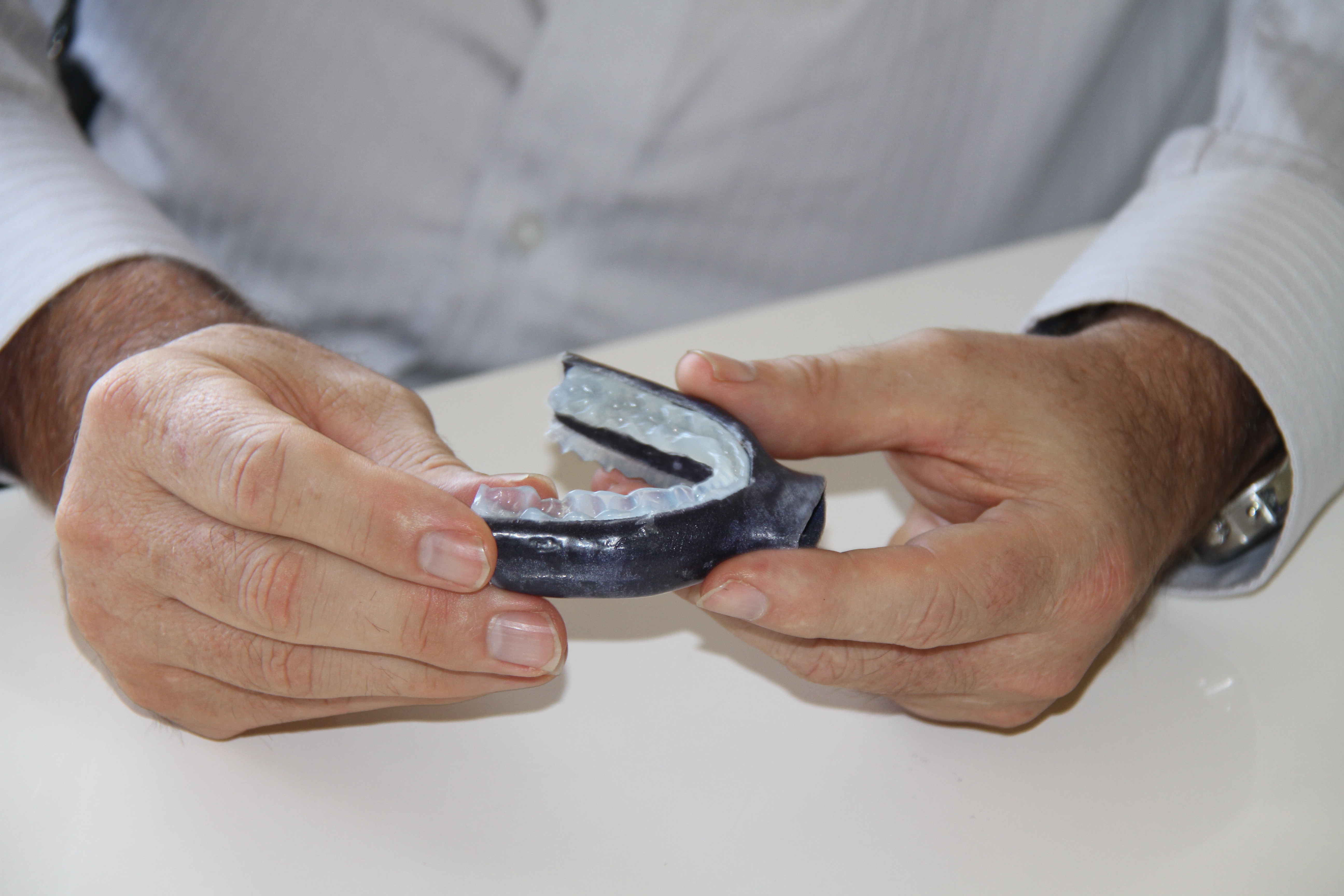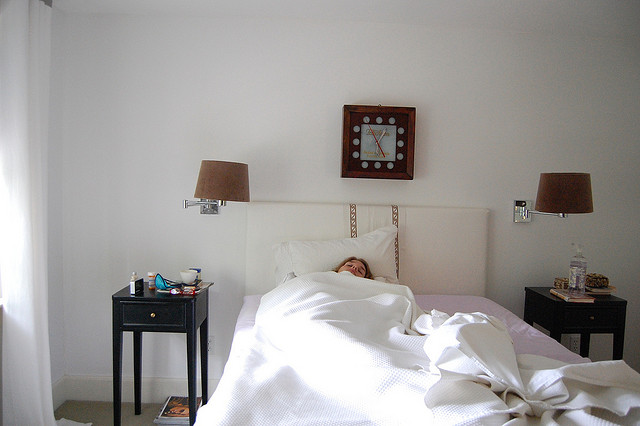UPDATE: Oventus have successfully completed clinical trials on the sleep apnoea mouthguard. The device is now available through clinicians in Brisbane, Sydney, Melbourne, Canberra, Adelaide, Perth, Darwin, the Gold Coast and Cairns. To find out more visit the Oventus website: http://oventus.com.au/
Our 3D printing experts have been on the grind with dental company Oventus to help over a million Aussies suffering from sleep apnoea breathe easy and stop snoring—their bed buddies might just thank us too.
The team have created the first 3D printed mouth piece, which allows air to flow through to the back of the throat, avoiding obstructions from the nose, the back of the mouth and tongue. Is there anything 3D printing can’t do?
Up close and personalised: The 3D printed mouthguard.
This is how it works: A patient’s mouth is scanned to create a mini ‘road map’ of the mouth. This scan is then transformed into a CAD file and can be fed through our 3D printer.
Eight hours later, ta-da! A perfectly fitting, titanium mouthguard.
Sounds super comfortable right? It actually is. The device is coated in medical grade plastic, making it easy to wear and leaving not a metal mouth in sight.
Sleep apnoea occurs when the air passage in the throat becomes blocked during sleep and causes people to stop breathing. In severe cases, people can suffer hundreds of events per night and one of the biggest symptoms? Snoring.
The breakthrough mouthguard has a ‘duckbill’ which extends from the mouth like a whistle and the sides of the guard divide into two separate airways.
Since it is used only on the top teeth it is more compact than treatments on the market, which include devices that push the lower jaw forward to open up the airway or in more severe cases; a face mask which creates a continuous flow of air.
Our 3D printing expert, John Barnes, said the technology is opening new doors for treatments of a range of medical issues globally.
“When Oventus came to us with this idea, we were really excited. The possibilities of 3D printing are endless and the fact that we can now design and print a completely customised mouthpiece for patients is revolutionary.
“We can print up to ten of these in a print run, which takes about 8 hours. It’s an exciting prospect for people suffering from the debilitating disorder and the design offers significant benefits which cannot be achieved with more traditional manufacturing techniques.”
Time to say goodbye to snoring. Image: Flickr/wolfhunter
The device is undergoing further trials and is expected to be available to patients next year.
Thanks to 3D printing, we can say goodnight to sleep apnoea.
And goodbye to snoring.
* * *
CSIRO’s additive manufacturing facility, Lab 22, is currently being used to manufacture a range of prototype products including biomedical implants, automotive, aerospace and defence parts for Australian industry.
Media: Angela Beggs | angela.beggs@csiro.au | 03 9545 2977 | 0477 337 920




21st May 2014 at 9:02 am
I was interested to read about your anti snoring devise and as I have that problem was wondering if there was a trial that I could take part in.
Many thanks
21st May 2014 at 9:28 am
Hi Dana. we’re not currently taking participants for trials at this stage, but if the time comes we’ll let you know.
Cheers,
Steph
21st May 2014 at 12:50 am
As I lie here istening to my husband snore, I think how wonderful a device like this would be if it works as described. But why so expensive? As pensioners we would have absolutely no hope of being able to afford this if it’s priced around $1500. I understand that R& D is expensive, but from what I’ve read, 3D printing isn’t. Such a shame that most people won’t be abe to afford it. So, I guess I’ll just go on listening to my husband snoring. 🙁
21st May 2014 at 11:11 am
Hi Kerba, the good news is they’re trying to bring the cost down as much as possible and at the moment this is just an estimate. The process involves a dental visit, scans, a CAD design to ensure the device fits perfectly, and of course printing in the highest quality titanium. We’ll be doing everything we can to ensure you too can have a good night sleep.
Cheers,
Steph
20th May 2014 at 8:12 pm
This development sounds really exciting, if it works the benefits would be amazing!! Well done. I’d love to be a guinea pig for trials. Would it also work to replace a splint for bruxism?
21st May 2014 at 11:12 am
Hi Grace, our experts believe this could stop teeth grinding too – so it’s double the good news. You can keep an eye on the Oventus website for more information.
Cheers,
Steph
13th May 2014 at 12:04 pm
The purpose of the appliance is not to clear a blocked airway but to prevent it from blocking. To this end this appliance advances the mandible as you describe but also incorporates an airway into the appliance bypassing obstructions arising from the nose and the soft palate. Obviously this is still in a development phase but the early clinical results have been very positive.
13th May 2014 at 1:58 pm
Thanks Chris, I will be interested to see the reults of your clinical trials and TGA comments later.
The trouble with many of these MAS is the cost plus dentists fees is generally higher than a CPAP machine.
Good luck with the development.
9th May 2014 at 1:13 pm
Cannot see how this would clear a blocked airway. If the obstruction is at the back of the throat this will not open the airway,
There are many Mandibular advancement splints similar to this available which only work on some types of OSA. When people need CPAP pressures of 14 to 20 it is highly doubtful this would be of any benefit.
Would love to see your scientific data